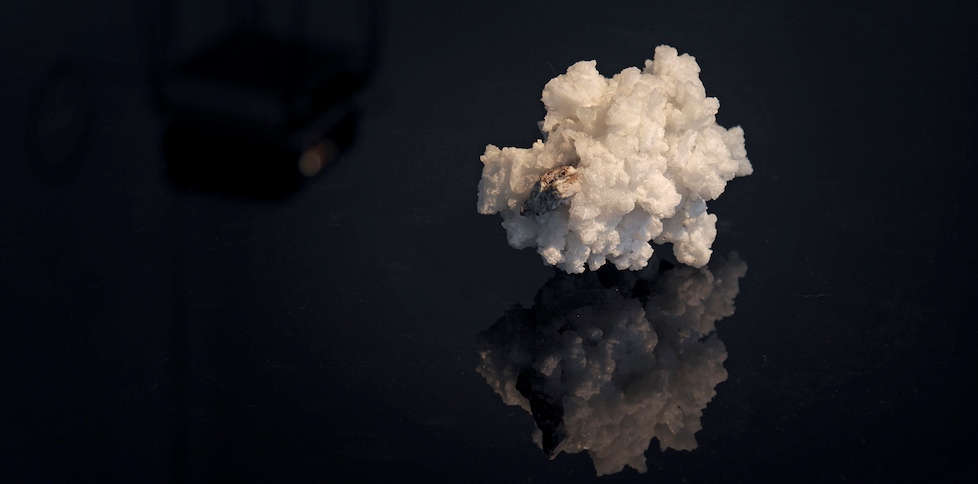
Oscar Santillan on Zaratán
The Ecuadorian artist Oscar Santillan came to the Netherlands to work at the Jan van Eyck in Maastricht. After participating in group exhibitions at De Ridder (Maastricht), Nest (Den Haag) and Centraal Museum (Utrecht) he now has his first presentation, titled Zaratán, at Witte de With (Rotterdam).It is here, on the ground floor space, that Santillan now presents his solo presentation with seven new works following a journey that led him from Russia to the Dominican Republic and to a non-existing island in the Atlantic ocean.
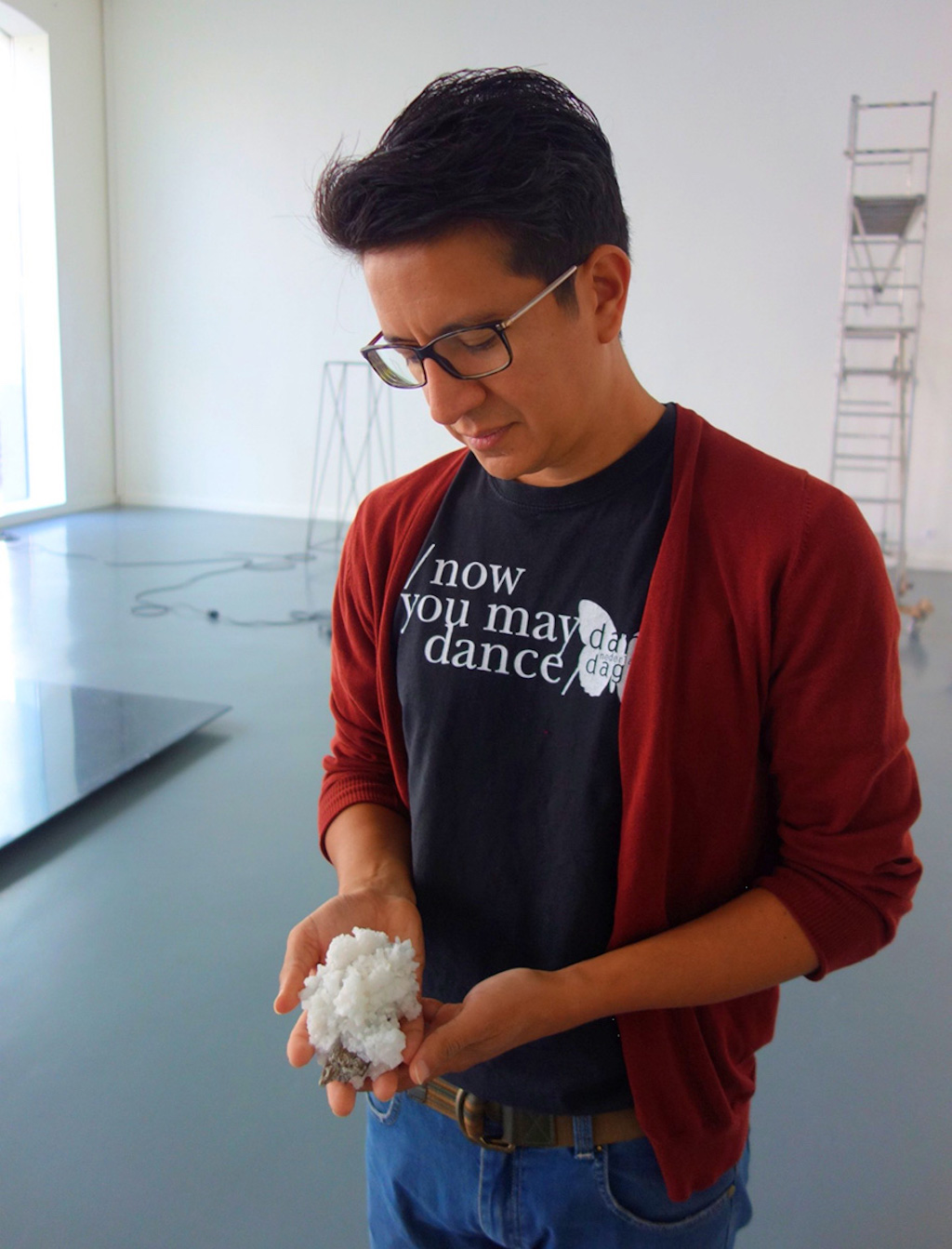
The work The Enemy can be seen as the key or introduction to the exhibition. It’s a piece derived from the work Lux (that was shown at the Lekker Licht exhibition in Centraal Museum), where a stone embodies the weight of all sunlight on earth. In The Enemy the two seemingly opposite values of light and mass are equal. The work introduces the attitude from which the other works have been developed where I focus on the fringes of a certain perspective and extend it to a new reality. I was invited to come to a small city in the Russian Caucasus for a project by curator Nav Haq, and there I started working on The Messenger, which is now on display at Witte de With. The Messenger is also the title of the feature film that actor and director Sergei Bodrov Jr. shot in 2002 in the Caucasus mountains. At the end of the second day of shooting an avalanche occurred killing Bodrov Jr. and most of the film crew. The footage of that last day was saved by chance but obviously the film was never finished.
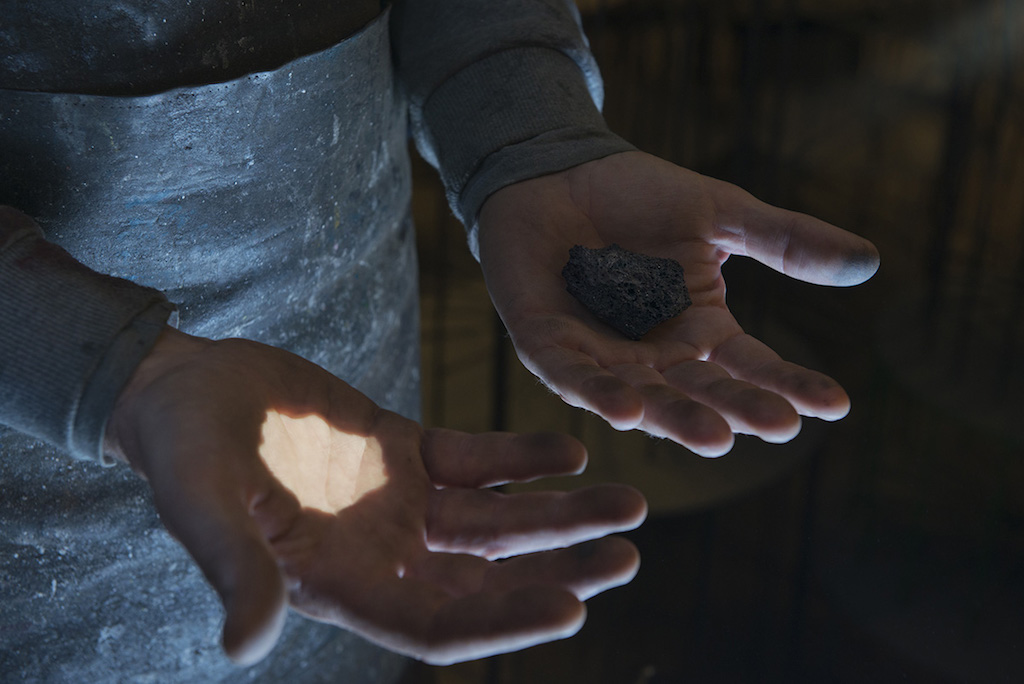
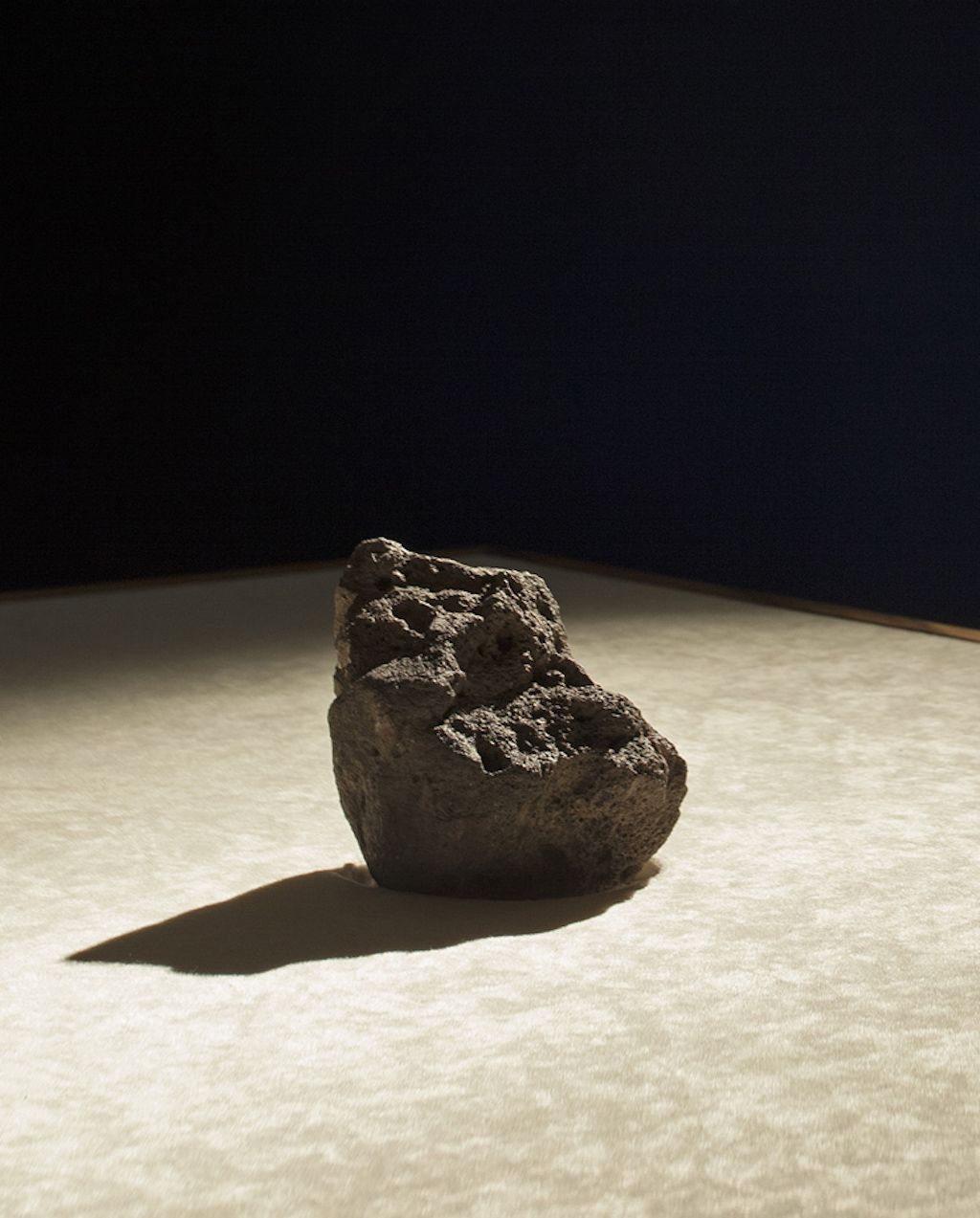
Is this a real story, it almost sounds too fantastic?
It’s definitely real, and it’s a known story in Russia as well because Sergei Bodrov Jr. was a famous actor and his father is a renowned filmmaker.
Why do you decide to choose certain myths or stories to base a new work on?
I never really had the intention to produce anything based at the location in Russia as I was only going to be there for 15 days, but then I stumbled onto this story and the producers of the project put me in touch with two survivors that led me to the film that had survived the tragedy. I’m trying to look at the world without separation to what has happened, what could have happened and even what may have happened. I want to erase the division between reality and possibility. What is amazing about this story is that in its tragedy, there is potential created besides the film footage. The script of the film shows a sense of possibility, and also helped me to trace back the steps that were taken for this film. All the footage shot prior to the tragedy still exists, and as a result the footage is loaded with meaning. It presented me with an ethical choice. I felt that since I had no relationship to the original story it was not for me to re-edit or show the original material. Instead I’m trying to enact an actual sense of a future. I’m traveling backwards in time in order to present a sense of future.
Are you presenting an alternative future?
In a way, yes, at the same time being faithful to the gaps created and respectful to the story I hope. As I did not want to show the footage, I decided to create the soundtrack for this unfinished movie using the blanc footage that was left at the end of the role of film, and with different instruments, a musician played the filmstrips to create a soundtrack, but in a literal sense. ?
Is this then just an honorary tribute? You don’t strike me as someone who would do this as a tribute to the victims of a certain tragedy. Is there another reason why you want to work with this kind of material?
No, it’s not a tribute. I like to work with material that is previously loaded with meaning. Like the work I did with Lost Star, taking one of the most epic enterprises of western science and start to reconcile it.
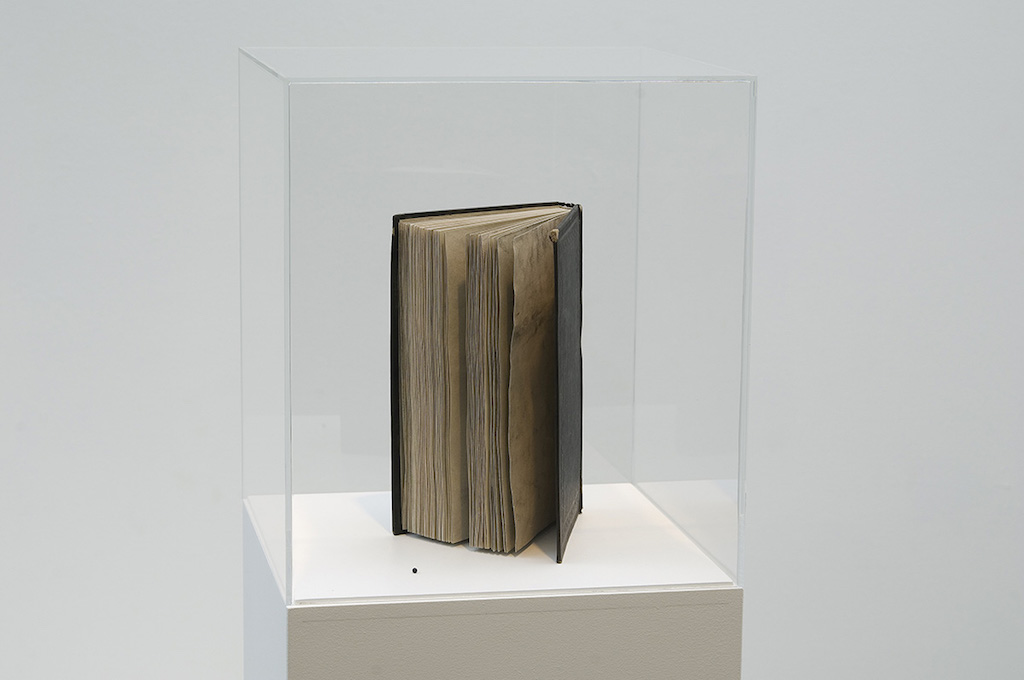
That’s the work with the book Cosmos from Alexander von Humboldt where you drained the ink out of, then molded the ink into a minuscule planet, and then placed it next to the book?
Exactly. The idea is to work with something loaded with meaning but then find something in there that is unmapped territory, an overlooked detail, a tiny glimpse of something. It’s like working on the periphery of vision. The faithful documentary way, would typically have you look straight ahead into the darkness, deconstruct and represent what information you find in front of you, and then bring it to light. I’m not interested in that. I rather delve into the material and follow the shadowy forms on the periphery of my vision.
It becomes a poetic perspective then?
I replace the documentary impulse with a poetic perspective. It’s paradoxical in terms of the research, as I follow traditional routes up to a certain point, then I deviate once I’ve tracked down that little sense of possibility that perhaps, was overlooked. Then it becomes a very speculative and engaging way of dealing with reality.
Talking of unmapped territory, the other work in the exhibition called Baneque really deals with unmapped territory. Although maybe a mapped non-existing territory might be a better description as the subject is a phantom island, an island that does not exist?
An historian from the Dominican Republic led me to the first map that Columbus used when he encountered America by landing at the Hispaniola Island (the island currently shared by Haiti and the Dominican Republic). When he arrived there and tried to get information from the natives on where to find gold he was told of the island of Baneque, where, supposedly he would find all the gold he wanted. Columbus then sailed on a two months expedition to Baneque, yet couldn’t locate it. Looking at Columbus’s map I found there was a small hole in it, a spot where the paper was worn. It saw, in effect, a hole in the Atlantic Ocean, but also a possibility there for Baneque. Columbus would have missed it as it was hidden behind the hole. I set off to the location of the hole in the map, found no island. On that spot I subtracted the matter from the water in order to materialize the island myself. The stable matter – the salt in the water – became a small mass of crystals through a process of evaporation, thus forming the island which was never discovered.
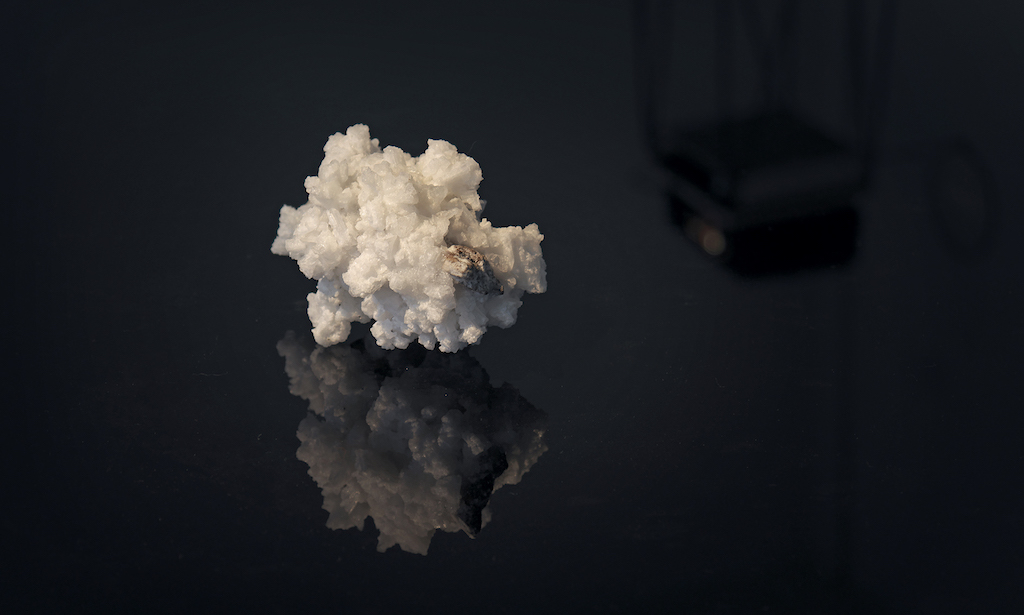
The forth work is on the windows?
Yes, I ground dinosaur fossils together with meteorites. The dust produced obscures the view through the windows from Witte de With, and takes us back 65 million years ago to the moment when an asteroid had hit Mexico and the earths’ atmosphere was filled with a mixture of meteorite and dinosaur dust. Thousands and thousands of animals became blind due to these dust clouds while plants would die due to the lack of proper sunlight.
You bring together quite a range of times and places?
Yes, this is the first time I’m consciously staging and pushing these types of relationships between works. The audience will continuously move between time and space when visiting the exhibition.
And the title, Zaratán?
Oh, it’s the name of a giant turtle that sailors mistook for an island, from The Book of imaginary Beings by Jorge Luis Borges: “There is one story that has ranged the whole of geography and all epochs – the tale of mariners who land on an unknown island which then sinks into the sea and drowns them because it’s a living creature”.
Oscar Santillan
Witte de With Rotterdam
22.4 t/m 3.7.2016
Eelco van der Lingen is director of Nest in The Hague and curator of Lekker Licht at Centraal Museum Utrecht
Eelco van der Lingen


